Kimchi is a traditional korean dish made with salted fermented vegetables. It is nutrient-dense, contains probiotics, and may help support the immune system and reduce inflammation, among many possible benefits. Historically, it hasn’t always been possible to grow fresh vegetables throughout the year. Therefore,
people
have developed food preservation methods, such as pickling and fermentation — a process that uses enzymes to create chemical changes in food. Kimchi typically contains cabbage and seasonings like sugar, salt, onions, garlic, ginger, and chili peppers.
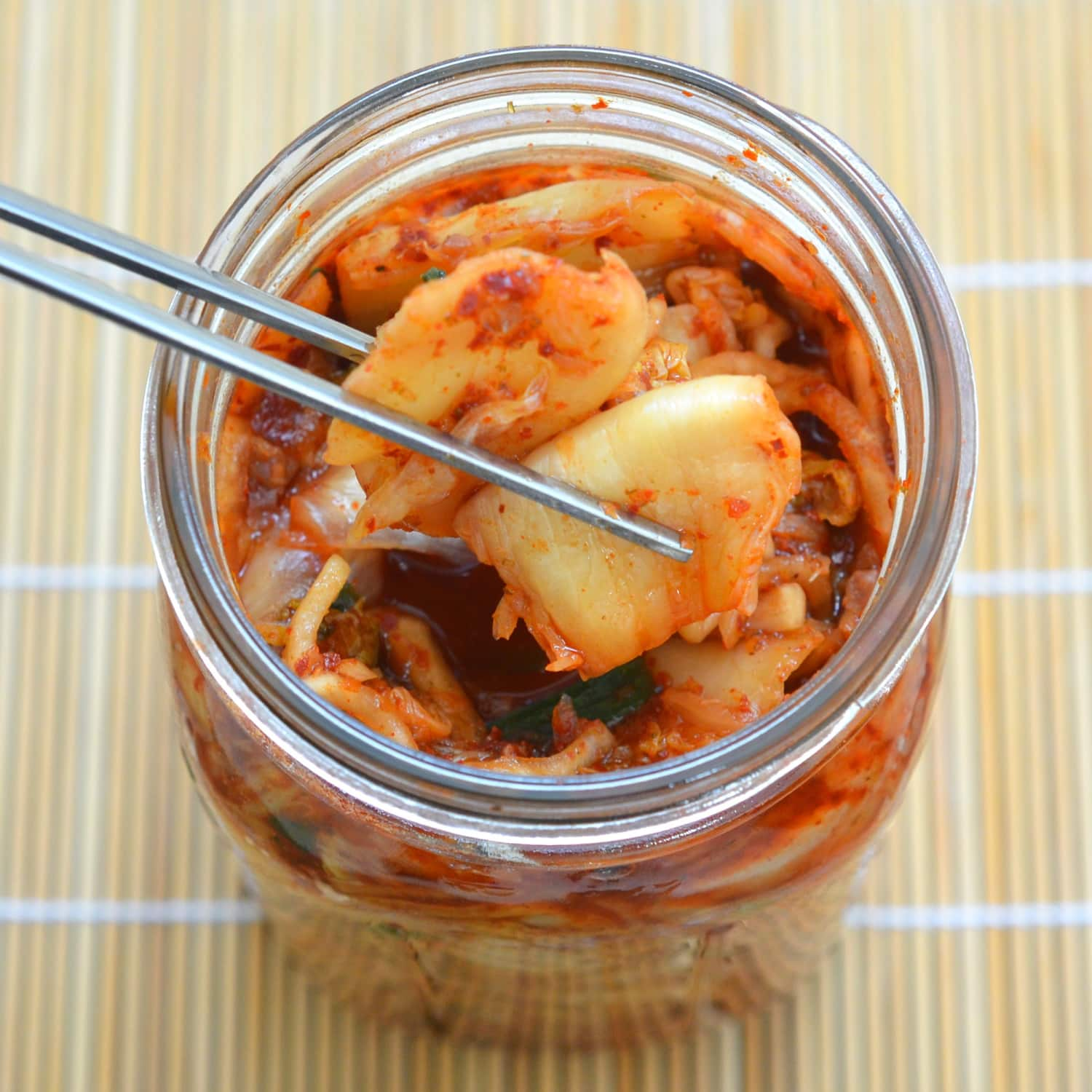 It may also boast other vegetables, including radish, celery, carrot, cucumber, eggplant, spinach, scallions, beets, and bamboo shoots.
It may also boast other vegetables, including radish, celery, carrot, cucumber, eggplant, spinach, scallions, beets, and bamboo shoots.
Kimchi, also spelled kimchee, spicy, fermented pickle that invariably accompanies a korean meal. The vegetables most commonly used in its preparation are celery cabbage , chinese turnip, and cucumber. The prepared vegetables are sliced, highly seasoned with red pepper, onion, and garlic , and fermented in brine in large earthenware jars. Dried and salted shrimp, anchovy paste, and oysters are sometimes used as additional seasonings. During fermentation, which takes approximately one month depending on weather conditions, the kimchi jars are stored totally or partially underground in cellars or sheds built expressly for this purpose.
Recent examples on the web while many cultures have been preparing food this way for millennia, the smart fermentor takes the guesswork out of making hot sauce, kimchi, and more. —ali francis, bon appétit, 15 aug. 2023 when customers sit down, they are brought a tray of japanese kimchi and chicken nuggets, along with three sauces made in house: a sweet vinegar soy sauce, a peanut butter sauce and a spicy curry sauce. —jason fontelieu, baltimore sun, 16 aug. 2023 put all the other kimchi ingredients in a blender and blitz to a paste. —amanda yeager, baltimore sun, 18 july 2023 the center of the action is a deli case displaying about 10 banchan, including seasonal kimchi (made with apples in the fall) and vegan napa cabbage kimchi.
Spoon the kimchi into a clean jar, crock or pot, pressing it in very firmly to minimise the amount of air trapped between the leaves. As much of the cabbage as possible should be submerged in the liquid it emits, so you need to weight it down – a clean plastic bag full of cold water should do the trick – then seal the jar.
Kimchi Recipe (Napa Cabbage Kimchi)
While chopped cabbage is doing it’s thing (above) for 3. 5 hours, prepare all the ingredients that will flavor up this cabbage into kimchi.
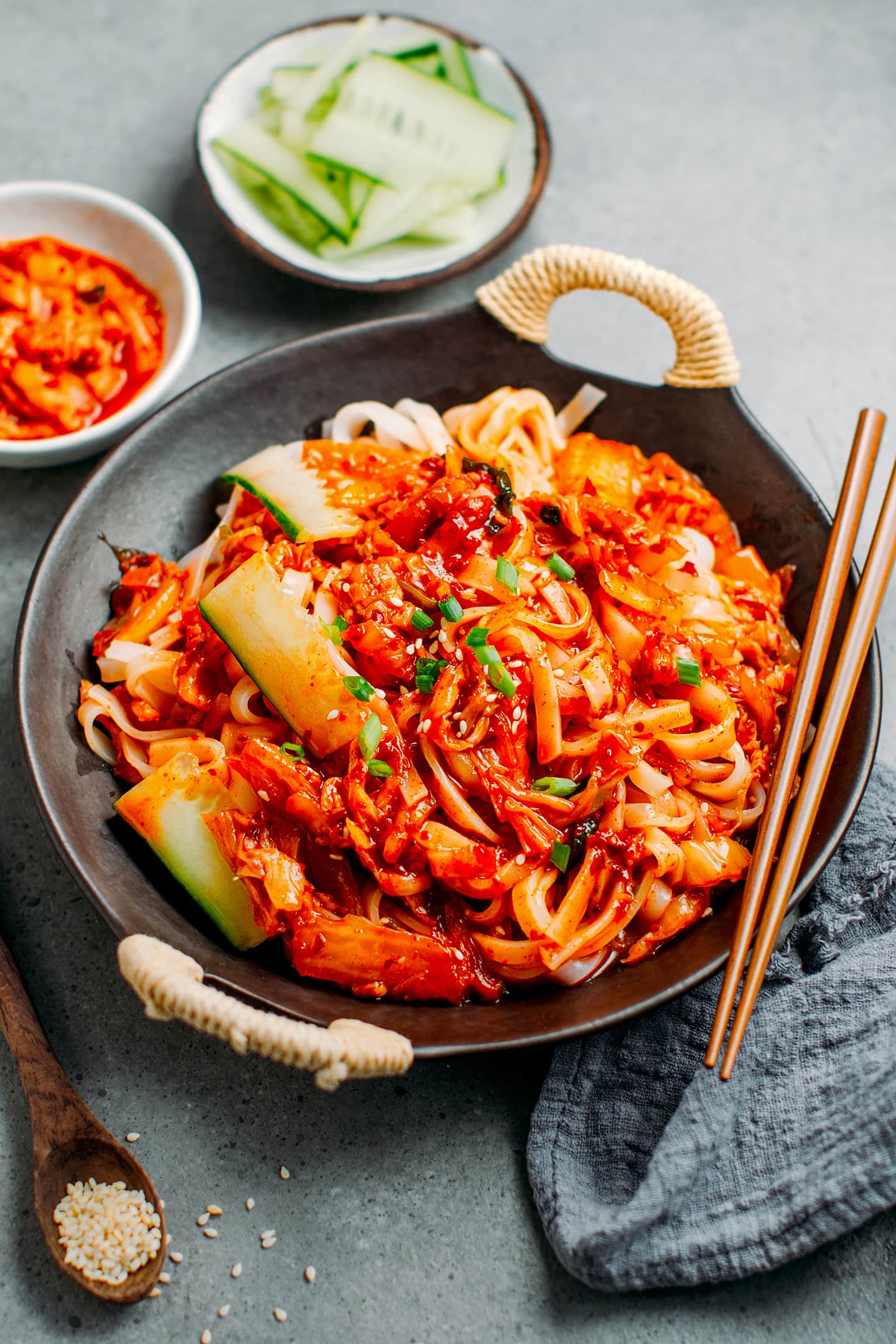 Flour mixture
we are going to make this flour mixture that will help with binding the seasonings to the napa cabbage. Do not turn on the stove’s heat just yet. In a small pot, add in 1 cup of water and 2 tbsp of all-purpose flour. Whisk ingredients so they are well incorporated. Turn on the heat to medium-high, and begin mixing this until it creates very slow bubbles (2-3 minutes). Once bubbles form, reduce heat to medium, and keep mixing until a thick consistency forms (3 minutes).
Flour mixture
we are going to make this flour mixture that will help with binding the seasonings to the napa cabbage. Do not turn on the stove’s heat just yet. In a small pot, add in 1 cup of water and 2 tbsp of all-purpose flour. Whisk ingredients so they are well incorporated. Turn on the heat to medium-high, and begin mixing this until it creates very slow bubbles (2-3 minutes). Once bubbles form, reduce heat to medium, and keep mixing until a thick consistency forms (3 minutes).
Yield: 1 gallon time: 4 hours consider this recipe the key that unlocks all the other levels of korean home cooking (or at least the ones in this book). Jean worked especially hard to get this recipe to fit a one-gallon jar exactly with her tong baechu kimchi, or whole napa cabbage kimchi (where the leaves are kept together by the core, rather than chopped up into pieces first; in my opinion, this results in a much better-tasting ferment). She did this mostly out of obsessiveness, but also because: is there anything more satisfying than a recipe that makes one perfect jar of a really good thing?.
Bigshot01/shutterstock baechu is perhaps one of the most popular types of kimchi. It is made from napa cabbage and can be very time-consuming to create (via serious eats ). Napa cabbage, south china morning post says, is a vegetable created from years of natural crossbreeding between southern china's bok choi cabbage and northern china's turnip. To make baechu kimchi, napa cabbage is quartered and given a long salt brine soak. Per serious eats, a slurry of gochugaru (the korean chili flakes that provide a signature red hue), sticky rice flour, sugar, fish sauce, and saeujeot (salted shrimp) is mixed with vegetables.
Vitamins and minerals in kimchi vary depending on the vegetables used. A napa cabbage-based kimchi includes plenty of vitamin c and vitamin k , as well as smaller amounts of iron, calcium, copper, and potassium. A kimchi recipe with carrots will contain significant vitamin a, and one with radishes will supply some folate, potassium, and riboflavin. Since all varieties of kimchi are made with salt, sodium is a mineral to watch out for. In just a half-cup serving, you may take in nearly 300 milligrams (13% dv) of your daily sodium.
Benefits of Homemade Kimchi
Given the popularity of kimchi today, there are many excellent options available from supermarkets and speciality stores, but if you want to benefit from the probiotics, you need to purchase it ready-made from the chilled section. The benefits of homemade are that you can add the ingredients you like, then ferment your kimchi until it tastes just right and it’s also very simple and inexpensive to make. Once the vegetables are prepared, fermentation takes care of the rest.
What Does Kimchi Taste Like
Hello everybody! i am so excited to show you how to make vegetarian or vegan kimchi today. It’s from my new cookbook ! how long have you been waiting for this recipe? or maybe you made your own adaptation of my traditional kimchi recipe or my easy kimchi recipe ? when people asked me how to make vegetarian kimchi in comments i always suggested to use soy sauce but i wasn’t totally satisfied with my own answer because soy sauce alone couldn’t replace the deep savoriness of fish sauce or salty fermented shrimp that i use in my kimchi. So i developed this recipe for my cookbook, the secret is in the vegetarian stock i created.
Combine cabbage and salt in a large bowl. Add enough water to cover the cabbage. Keep the cabbage submerged with a plate or a sealable bag filled with water. Cover the bowl and let stand at room temperature overnight or up to 24 hours. Drain the cabbage, saving the brine. Rinse and squeeze the cabbage dry. Return to the bowl and add daikon and scallions. Place red pepper flakes, fish sauce, ginger, garlic and sugar in a mini food processor. Process until almost smooth. Transfer to the large bowl with the cabbage. Using a disposable food-safe glove, massage the vegetables and the red pepper mixture together until well coated.
Kimchi, which continuously changes over time, is a culture in itself and embodies the soul of the korean people. Kimchi is a food full of history and wisdom. The origin of kimchi begins with the salting of vegetables by korean ancestors, who tried to achieve a balance between health and nutrition by consuming the nutrients of fresh vegetables even in colder seasons. Over time, various spices and seasonings were added to the pickled vegetables, and the basis of kimchi was formed. Subsequently, it has evolved into various types according to regions and tastes, and is now completed with numerous types of kimchi that we enjoy and are indispensable today.
Kimchi is a type of fermented dish that has a tangy, sour, salty taste. The star of the show is usually chinese cabbage, but kimchi can be made with other veggies, too. You can find kimchi with onions, radish, carrots, cucumbers, and more. It’s usually flavored with garlic, ginger, salt, sesame seeds, and soy sauce, but recipes can vary. Kimchi is fermented. That means microorganisms break down carbohydrates in the vegetables, creating an acidic environment that gives kimchi its signature tang. Thanks to all the veggies and this fermentation process, kimchi has been linked to some pretty impressive health benefits.
How to Store Kimchi
Kimchi is a traditional korean dish that consists of fermented, salted vegetables. It can contain a variety of ingredients but most often includes cabbage and seasonings such as sugar, salt, onions, garlic, ginger, and chili peppers. Before advances in agriculture and technology, it was difficult to store food for long periods of time without spoilage. Therefore, people developed food preservation methods to keep food for longer. Fermentation is a process that utilizes microorganisms and enzymes to create chemical changes in food that can improve the shelf life of some foods and beverages. Traditionally, during the fermentation process of kimchi — which can take up to 1 month — people place kimchi in special jars that they partially or totally store underground.
Because 70 percent to 80 percent of the immune system is actually stored within the gut, probiotic-rich kimchi can help you fight bacterial infections, viruses, common illnesses and serious chronic conditions, too. Potential probiotic benefits have been have been seen in the treatment or prevention of: diarrhea garlic is another immune system booster that inhibits the activities of many harmful viruses, fights fatigue and lowers inflammation. It has been considered a food for promoting longevity for thousands of years as well. Ginger is a time-honored beneficial ingredient that helps soothe the digestive organs, nourish the gut, fight bacteria and help you heal quicker from being sick.
While making your own kimchi can be fun, it’s quite easy to find kimchi at grocery stores, health food stores, and asian markets. If you want to get the full probiotic benefits of kimchi, check the label to make sure it contains live bacteria. Although most kinds do, some may be made with vinegar or pasteurized, which kills the beneficial bacteria. When you open a jar of live kimchi, you might see it bubble. This is nothing to worry about and is actually a good sign, showing that the probiotic bacteria are alive and fermenting the kimchi. Once open, you should store kimchi in the refrigerator.
Pack the kimchi into a mason jar and add just enough brine from step 3 (if needed) to cover the ingredients. Seal and place the jar on a shelf out of direct sunlight for 24 hours. Some liquid may seep out of the jar, so place it on a plate to avoid messes. After 24 hours, open the jar to release gases—it should have strong odors. Then, reseal and store kimchi in the fridge for up to 1 month. Add to soup, as a side dish, or with veggie burgers.

 In food production , it may more broadly refer to any process in which the activity of microorganisms brings about a desirable change to a foodstuff or beverage. The science of fermentation is known as zymology. In microorganisms, fermentation is the primary means of producing adenosine triphosphate (atp) by the degradation of organic nutrients anaerobically. Humans have used fermentation to produce foodstuffs and beverages since the neolithic age.
In food production , it may more broadly refer to any process in which the activity of microorganisms brings about a desirable change to a foodstuff or beverage. The science of fermentation is known as zymology. In microorganisms, fermentation is the primary means of producing adenosine triphosphate (atp) by the degradation of organic nutrients anaerobically. Humans have used fermentation to produce foodstuffs and beverages since the neolithic age.
 Place rinsed cabbage in a large container with a tight fitting lid. Stir in fish sauce, green onions, white onion, garlic, sugar, and ginger.
Place rinsed cabbage in a large container with a tight fitting lid. Stir in fish sauce, green onions, white onion, garlic, sugar, and ginger.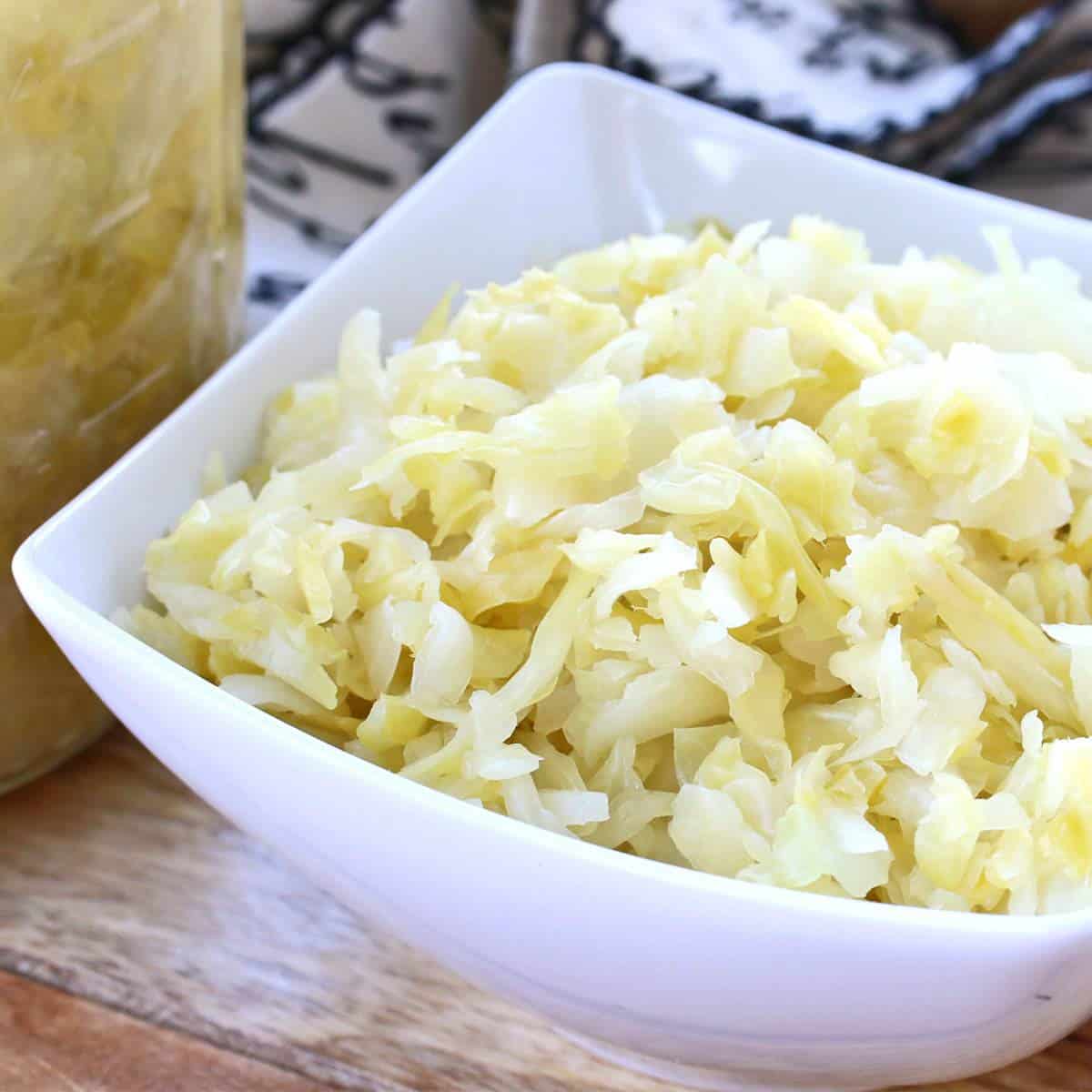 She pours this love of all things sweet (and sometimes savory) into bakeable , taste of home's baking club. Lisa is also dedicated to finding and testing the best ingredients, kitchen gear and home products for our test kitchen-preferred program. At home, you'll find her working on embroidery and other crafts. Do not sell or share my personal information
terms of use.
She pours this love of all things sweet (and sometimes savory) into bakeable , taste of home's baking club. Lisa is also dedicated to finding and testing the best ingredients, kitchen gear and home products for our test kitchen-preferred program. At home, you'll find her working on embroidery and other crafts. Do not sell or share my personal information
terms of use. Patients who were given probiotics had no more side effects than patients who didn’t receive them.
Patients who were given probiotics had no more side effects than patients who didn’t receive them.
 Fermenting veggies is an easy way to ensure that you can easily incorporate more probiotics into your diet. Most of us are used to canned foods, especially since all the pickles available in grocery stores are canned. But fermentation is an old preservation method and it was used back in the day to preserve food for winter. It’s also a method that requires less work than canning. Both methods can give you delicious pickles so let’s analyze the two methods and see how fermentation differs from canning.
Fermenting veggies is an easy way to ensure that you can easily incorporate more probiotics into your diet. Most of us are used to canned foods, especially since all the pickles available in grocery stores are canned. But fermentation is an old preservation method and it was used back in the day to preserve food for winter. It’s also a method that requires less work than canning. Both methods can give you delicious pickles so let’s analyze the two methods and see how fermentation differs from canning.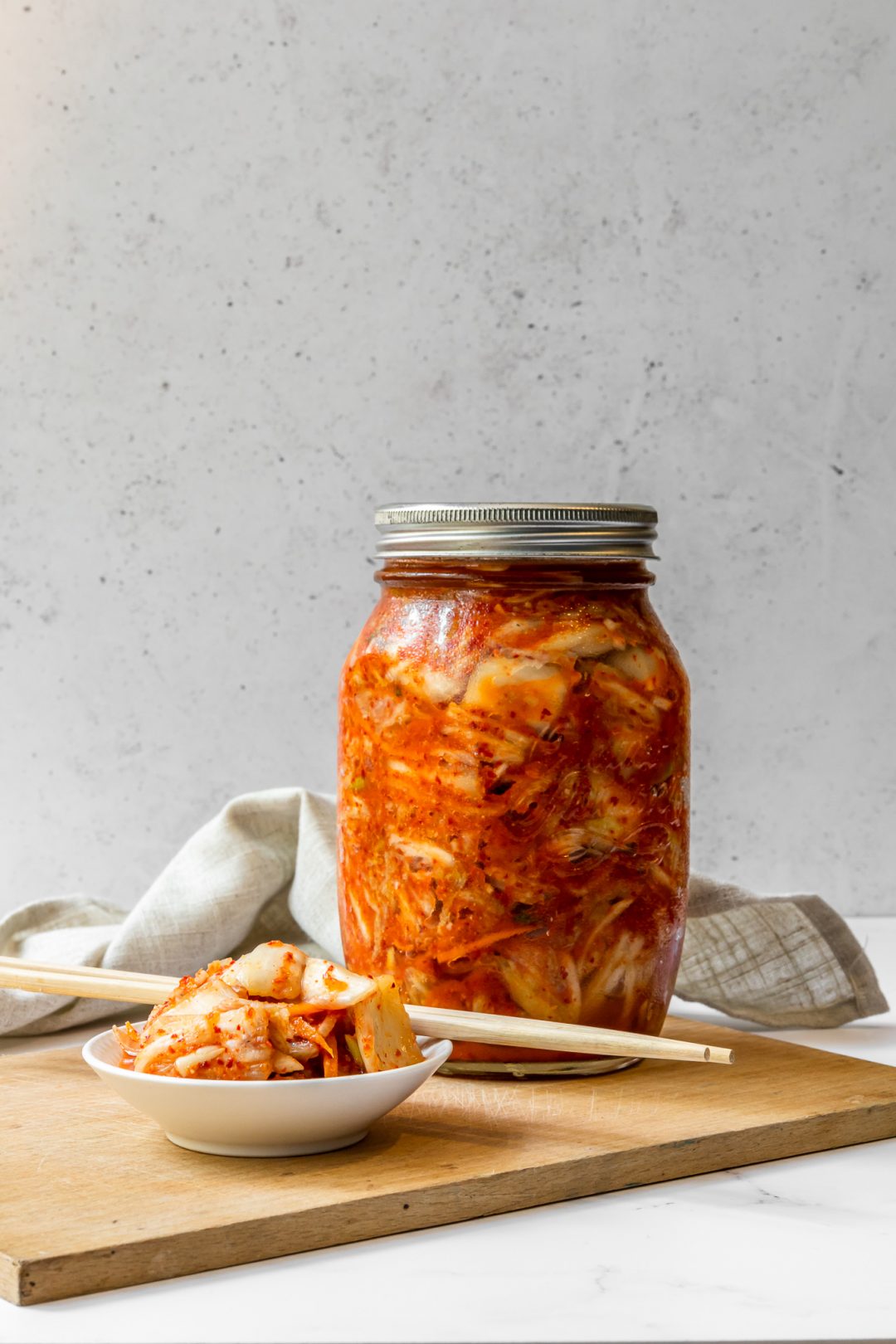 It often also includes julienned daikon radishes and carrots; sometimes asian pears or apples are added to the brine for sweetness. Other ingredients can be added or subbed in, such as oysters (although the oysters can break down within the kimchi if kept too long, so it’s best to eat within 2 to 3 weeks), or minari, which would give the kimchi herbaceous flair but could overpower the other ingredients.
It often also includes julienned daikon radishes and carrots; sometimes asian pears or apples are added to the brine for sweetness. Other ingredients can be added or subbed in, such as oysters (although the oysters can break down within the kimchi if kept too long, so it’s best to eat within 2 to 3 weeks), or minari, which would give the kimchi herbaceous flair but could overpower the other ingredients. นิธิยา รัตนาปนนท์
กิมจิ (kimchi) เป็นอาหารพื้นเมืองของประเทศเกาหลี ใช้รับประทานเป็นเครื่องเคียง ( side dish ) เสริฟพร้อมกับอาหารประเภทเนื้อสัตว์ วัตถุดิบหลัก คือผักกาด หัวไชเท้า ต้นหอม พริกชี้ฟ้า กระเทียม ขิง น้ำปลา เกลือ น้ำตาล ที่ผ่านการหมัก ( fermentation ) ให้เกิดกรดแล็กทิก ( lactic acid fermentation ) ด้วยจุลินทรีย์ที่ผลิตกรดแล็กทิก ( lactic acid bacteria ) มีรสเปรี้ยว และเค็ม เผ็ดเล็กน้อย.
นิธิยา รัตนาปนนท์
กิมจิ (kimchi) เป็นอาหารพื้นเมืองของประเทศเกาหลี ใช้รับประทานเป็นเครื่องเคียง ( side dish ) เสริฟพร้อมกับอาหารประเภทเนื้อสัตว์ วัตถุดิบหลัก คือผักกาด หัวไชเท้า ต้นหอม พริกชี้ฟ้า กระเทียม ขิง น้ำปลา เกลือ น้ำตาล ที่ผ่านการหมัก ( fermentation ) ให้เกิดกรดแล็กทิก ( lactic acid fermentation ) ด้วยจุลินทรีย์ที่ผลิตกรดแล็กทิก ( lactic acid bacteria ) มีรสเปรี้ยว และเค็ม เผ็ดเล็กน้อย. Today, gmfh’s editorial staff offers you a selection of material developed by the international scientific association for probiotics and prebiotics (isapp) to better understand these bacteria.
Today, gmfh’s editorial staff offers you a selection of material developed by the international scientific association for probiotics and prebiotics (isapp) to better understand these bacteria. But supplemental probiotics, consumed naturally or in supplement form, can help restore a healthy gut microbiome. A 2018 study published by the national institutes of health (nih) indicates probiotics support immune function, digestion, and nutrition absorption. Another 2018 nih study notes that probiotics can decrease the risk or duration of common infections, including those of the respiratory tract and gut. With this in mind, we went to work and tried a handful of top-rated probiotics, spanning a range of budgets and particular gut health needs.
But supplemental probiotics, consumed naturally or in supplement form, can help restore a healthy gut microbiome. A 2018 study published by the national institutes of health (nih) indicates probiotics support immune function, digestion, and nutrition absorption. Another 2018 nih study notes that probiotics can decrease the risk or duration of common infections, including those of the respiratory tract and gut. With this in mind, we went to work and tried a handful of top-rated probiotics, spanning a range of budgets and particular gut health needs. But it certainly makes a fine side dish all on its own to go with any asian meal. Here are some of our favorite korean recipes that i serve with fresh kimchi:
bulgogi (korean grilled beef)
gluten-free korean veggie pancake
japchae (korean stir-fried noodles).
But it certainly makes a fine side dish all on its own to go with any asian meal. Here are some of our favorite korean recipes that i serve with fresh kimchi:
bulgogi (korean grilled beef)
gluten-free korean veggie pancake
japchae (korean stir-fried noodles)..JPG)
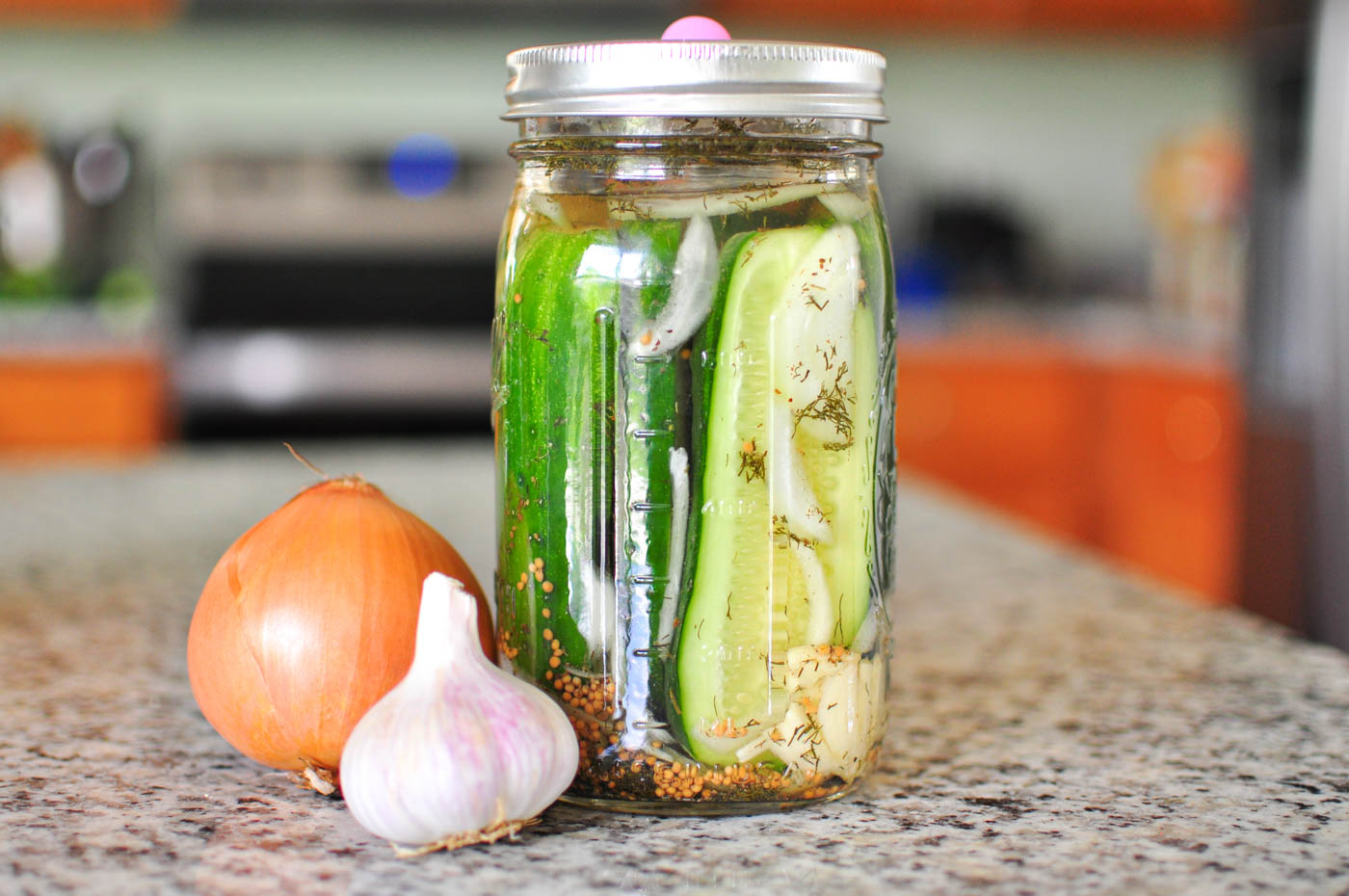 Add the other garlic and remaining spices. Dissolve salt in the hot water and then add vinegar. Pour into jar. It should cover the pickles by at least an inch. Seal loosely with a ring and cap, or tie some cheesecloth over the top.
Add the other garlic and remaining spices. Dissolve salt in the hot water and then add vinegar. Pour into jar. It should cover the pickles by at least an inch. Seal loosely with a ring and cap, or tie some cheesecloth over the top.